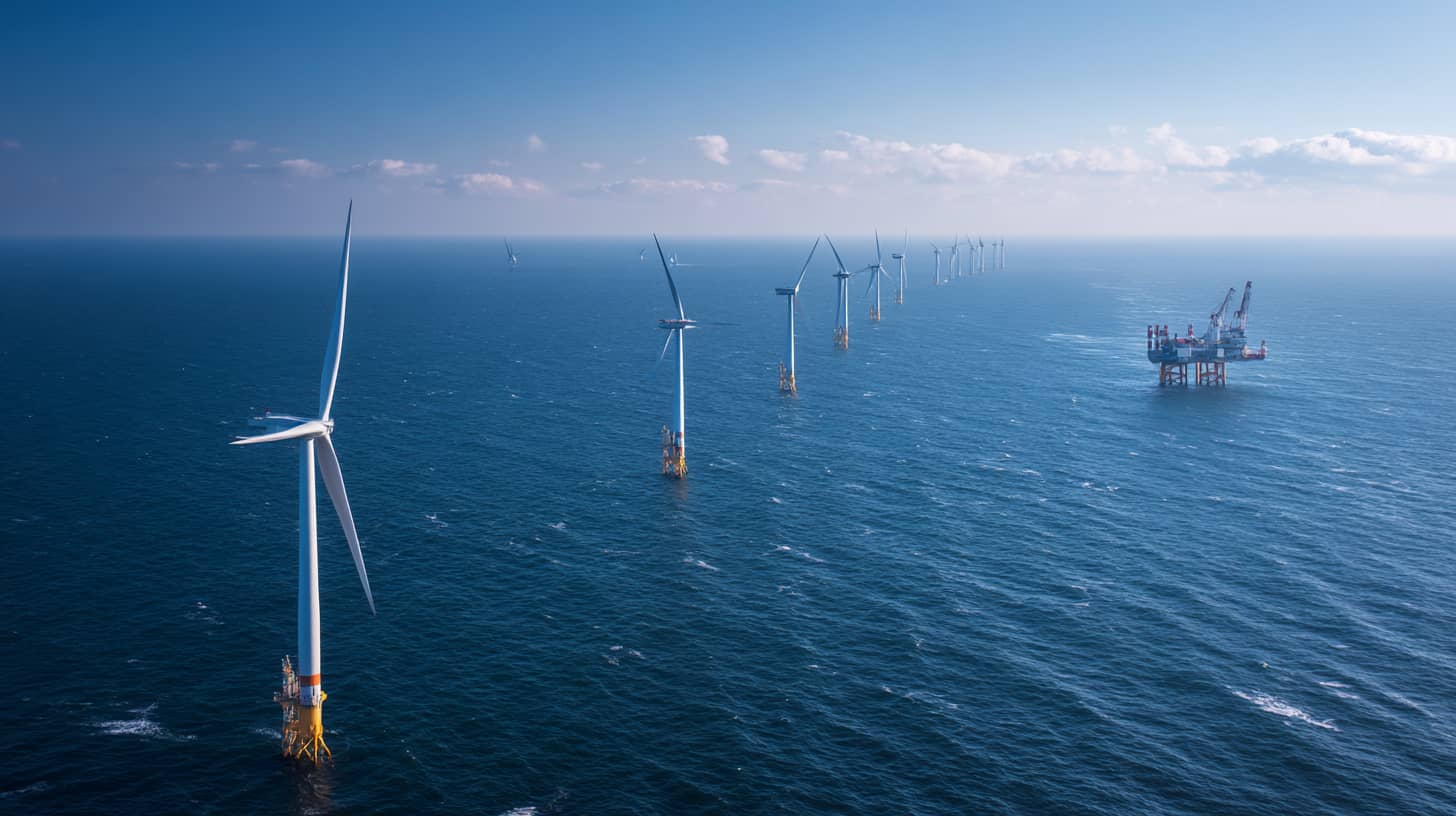When nature puts you to its toughest test
Just imagine: Salt water, gale-force winds and temperature fluctuations attack gigantic steel structures around the clock. Welcome to the reality of offshore wind energy. Here, coatings decide on investments worth billions - and on Europe's energy future.
The North Sea is an extreme laboratory for surface technology. What survives here for 25 years sets global standards. Modern wind turbine coatings have to overcome challenges that would be unthinkable on land.
Why normal coatings fail in the North Sea
Salt water is the arch-enemy of every surface. Combined with constant moisture and UV radiation, aggressive corrosion processes occur. Added to this are mechanical stresses caused by waves and vibrations from the rotors.
Offshore platform coating requires completely different approaches than land-based systems. Standard corrosion protection fails within years. The solution: multi-layer systems with up to twelve different functional layers.
Certified coaters use specially developed epoxy resin coating service formulations. These not only offer corrosion protection, but also flexibility in the event of extreme temperature fluctuations.
Innovation through extreme conditions
What makes offshore coatings so special? The answer lies in the combination of proven principles with state-of-the-art technology. Anti-fouling coating prevents mussel infestation, which would cause maintenance costs to explode.
Polyurethane coating expert teams develop UV-stable systems for a 25-year service life. Self-cleaning surfaces drastically reduce maintenance intervals. Nano-additives improve salt water resistance many times over.
Particularly innovative: intelligent coatings with integrated sensors. These continuously monitor the condition of the surface and report maintenance requirements at an early stage.
Quality control under extreme conditions
How do you test coatings under offshore conditions? Salt spray test Expert procedures simulate decades of exposure to the sea in just a few months. UV resistance Testing is carried out under extreme northern conditions.
Surface analysis service uses spectroscopic methods to monitor chemical changes. Layer thickness measurement service is carried out directly on the platforms using non-destructive methods.
Coating inspection service teams work under extreme conditions. Helicopter transportation, climbing equipment and weather windows determine the workflow. Every inspection is a logistical masterpiece.
Economic revolution through perfect surfaces
Offshore wind farms are investments worth billions. Coating failures can jeopardize entire projects. Professional coating service companies therefore calculate life cycle costs over decades.
Modern wind turbines produce clean electricity for 25 years. Surface protection specialist know-how makes this possible. Every day of unplanned maintenance costs tens of thousands in lost energy production.
Today, B2B coating consulting includes complex profitability analyses. Coating expert teams optimize not only technical performance, but also financial profitability.
Technology transfer to other industries
What works in the North Sea is revolutionizing other areas. Marine coating companies are adapting offshore technologies for superyacht coating expert applications. Cruise ships benefit from saltwater-resistant systems.
Offshore coating service findings flow into bridge coating expert projects. Highway bridges in coastal areas use maritime protection systems. Hafenanlage Coating Service relies on proven offshore materials.
Industrial coating contract projects in the petrochemical industry adopt corrosion-resistant formulations. Chemical plant coating benefits from aggressive environmental solutions.
Maintenance strategies for eternity
Offshore systems are difficult to access. Coating maintenance service must therefore be preventive. Predictive maintenance through surface inspection Service provider detects problems before critical failures occur.
Drone-based inspections are revolutionizing monitoring. High-resolution cameras capture minimal surface changes. AI algorithms automatically analyze millions of pixels.
Paint damage repair service is carried out under extreme conditions. Special ships with lifting cranes enable repairs to be carried out on the high seas. Mobile coating systems are delivered to the wind turbine by helicopter.
The future is already afloat
Floating wind farms in even deeper waters pose new challenges. Flexible coatings must compensate for permanent movements. Corrosion protection service providers develop adaptive systems.
Hydrogen production on the high seas requires new surface technologies. Electrolysis plants need chemical-resistant coatings. Tank coating companies open up maritime markets.
The offshore wind revolution proves that extreme conditions promote technical breakthroughs. What conquers the North Sea today will become the global standard tomorrow. Coating system planning already thinks in terms of generations rather than years.
Every wind turbine is proof of the power of perfect surface technology. 25 years of North Sea storms are just the beginning.
